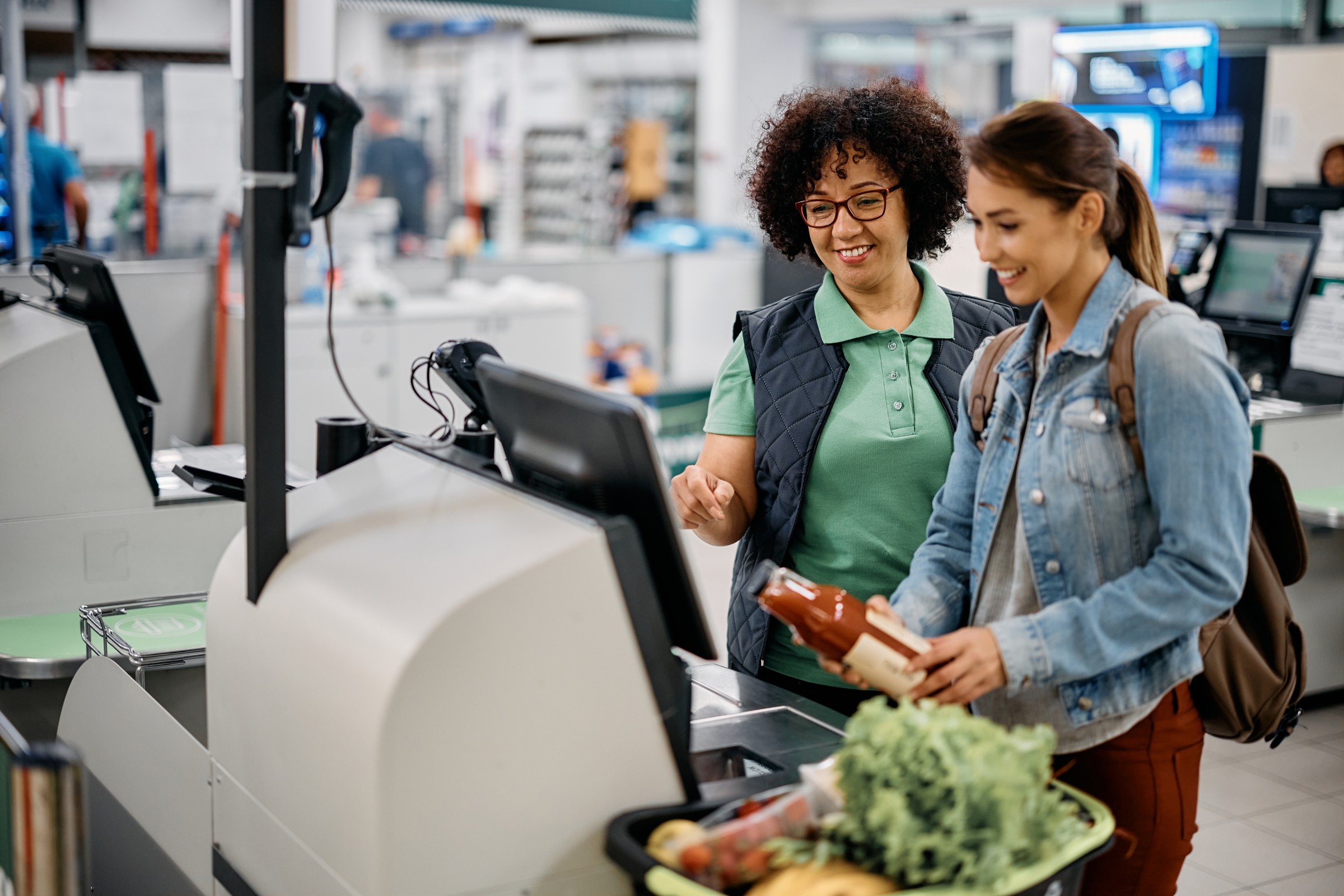Improving Customer Experience in Supermarkets with Digital Self-Service Tools

In today’s fast-paced retail world, consumers demand more than just a wide variety of products at competitive prices. They expect convenience, speed, and an exceptional customer experience. For supermarkets, providing this level of service can be challenging, especially with increasing competition from online retailers. However, the key to standing out lies in embracing digital self-service tools that empower customers and streamline the in-store experience.
Imagine walking into a supermarket where there are no long checkout lines, where every question is answered instantly, and where the entire shopping experience is designed to save you time and effort. This is the future of customer experience in supermarkets, and it’s being made possible by digital self-service tools.
From self-checkout kiosks to AI-driven customer service assistants, these tools are transforming how customers interact with supermarkets. They provide faster service, reduce operational friction, and create a more personalized shopping journey. Let’s dive deeper into how these innovations are shaping the future of customer experience in retail.
The shift toward self-service isn’t just a trend—it’s a response to changing consumer behaviors. In a world where customers are used to the instant gratification of online shopping, they expect a similar level of convenience when they step into a physical store. Waiting in line to check out or ask for help is becoming a thing of the past.
Studies show that more than 60% of customers prefer self-service options when shopping, and that number is steadily growing. With the rise of digital-savvy consumers, supermarkets have to adapt to meet these expectations or risk losing business to competitors who offer a faster, more efficient shopping experience.
Perhaps the most recognizable form of self-service in supermarkets is the self-checkout kiosk. These kiosks allow customers to scan and bag their items without the need for a cashier. The benefits are immediate:
Faster checkout times: Customers no longer have to wait in long lines.
Greater control: Shoppers can scan and pack items at their own pace.
Reduced staffing costs: Supermarkets can allocate fewer employees to manned checkout lanes, redirecting staff to other customer service areas.
Self-checkout kiosks are a win-win for both customers and retailers. They enhance the shopping experience by offering a quick and efficient way to complete transactions, while also reducing operational costs for supermarkets.
While self-checkout solves one part of the customer experience puzzle, AI-driven customer service assistants are helping address another. These digital assistants—powered by artificial intelligence—can be placed in-store or accessed via smartphones and apps, providing customers with instant answers to common questions like:
Where can I find a product?
Are there any ongoing promotions?
What are the store hours or policies?
Instead of searching for a staff member to assist them, customers can use digital kiosks or their phones to get the information they need, saving time and avoiding frustration. In some stores, AI-driven assistants can even provide personalized product recommendations based on the shopper's past purchases or preferences, enhancing the overall shopping experience.
Imagine walking into a store, unsure of where to find an obscure ingredient for a new recipe. Instead of wandering the aisles or waiting to ask an employee, you simply ask the digital assistant, which instantly guides you to the right aisle and shelf.
As cash payments continue to decline in favor of cards and digital wallets, contactless payment options are becoming essential for supermarkets. Shoppers today expect to be able to pay with a simple tap of their phone or card, and supermarkets are responding by upgrading their point-of-sale systems to support these transactions.
The benefits of contactless payments are clear:
Speed and efficiency: Customers can complete transactions in seconds.
Enhanced safety: In a post-pandemic world, contactless options reduce the need for physical interaction.
Seamless integration: Contactless payments can be easily paired with loyalty programs, allowing customers to earn rewards effortlessly.
This streamlined payment process enhances customer satisfaction, making checkout quicker and more convenient. Supermarkets that adopt contactless payment options not only cater to modern consumer preferences but also create a safer, more hygienic shopping environment.
Mobile apps are another powerful self-service tool that is transforming how customers engage with supermarkets. Many leading retailers now offer apps that allow customers to:
Create shopping lists
Access exclusive deals and coupons
Track rewards points and past purchases
Locate items within the store
These apps personalize the shopping experience by sending customers relevant promotions and reminders based on their shopping habits. For example, if a customer frequently buys organic produce, the app may notify them of an upcoming sale on organic items.
Additionally, some apps integrate with in-store navigation systems, helping customers find the products they’re looking for with ease. In an age where convenience is king, mobile apps provide a level of personalization that builds customer loyalty and encourages repeat visits.
Loyalty programs have long been a staple in the retail world, but digital self-service tools are taking them to the next level. Instead of carrying around a physical card or remembering their account details, customers can now access loyalty rewards through digital kiosks, mobile apps, or even contactless payments.
These programs offer a variety of benefits:
Instant rewards: Customers can redeem points or discounts at checkout without hassle.
Personalized offers: Based on purchasing history, loyalty programs can tailor deals and promotions to individual shoppers.
Seamless integration: Loyalty programs can be linked to mobile apps and contactless payment options for a frictionless experience.
Supermarkets that leverage digital tools to enhance their loyalty programs are able to create more meaningful connections with their customers, driving engagement and fostering repeat business.
Beyond improving the customer experience, digital self-service tools offer a range of operational benefits for supermarkets:
Reduced operational costs: Self-checkout kiosks and digital assistants reduce the need for human staff in certain areas, allowing supermarkets to run more efficiently.
Increased sales: By offering personalized recommendations and promotions, these tools can boost sales and encourage upselling.
Enhanced data insights: Self-service tools collect valuable customer data, which supermarkets can use to analyze shopping behaviors, optimize store layouts, and improve marketing strategies.
As the retail landscape continues to evolve, supermarkets that invest in digital self-service tools will be well-positioned to thrive in an increasingly competitive market.
The future of customer experience in supermarkets lies in the seamless integration of digital self-service tools. From self-checkout kiosks to AI-driven customer service assistants, these innovations empower customers to take control of their shopping journeys while simultaneously streamlining operations for retailers.
Supermarkets that embrace these technologies are not only improving customer satisfaction but also driving operational efficiency and staying ahead of their competition. As the digital revolution continues to shape the retail world, the smart, self-service supermarket is quickly becoming the new standard.

For modern telecom enterprises, delivering exceptional QoS is no longer optional—it’s a brand differentiator and a strategic lever for growth. Static provisioning models won’t cut it in a world of hyper-dynamic data usage.